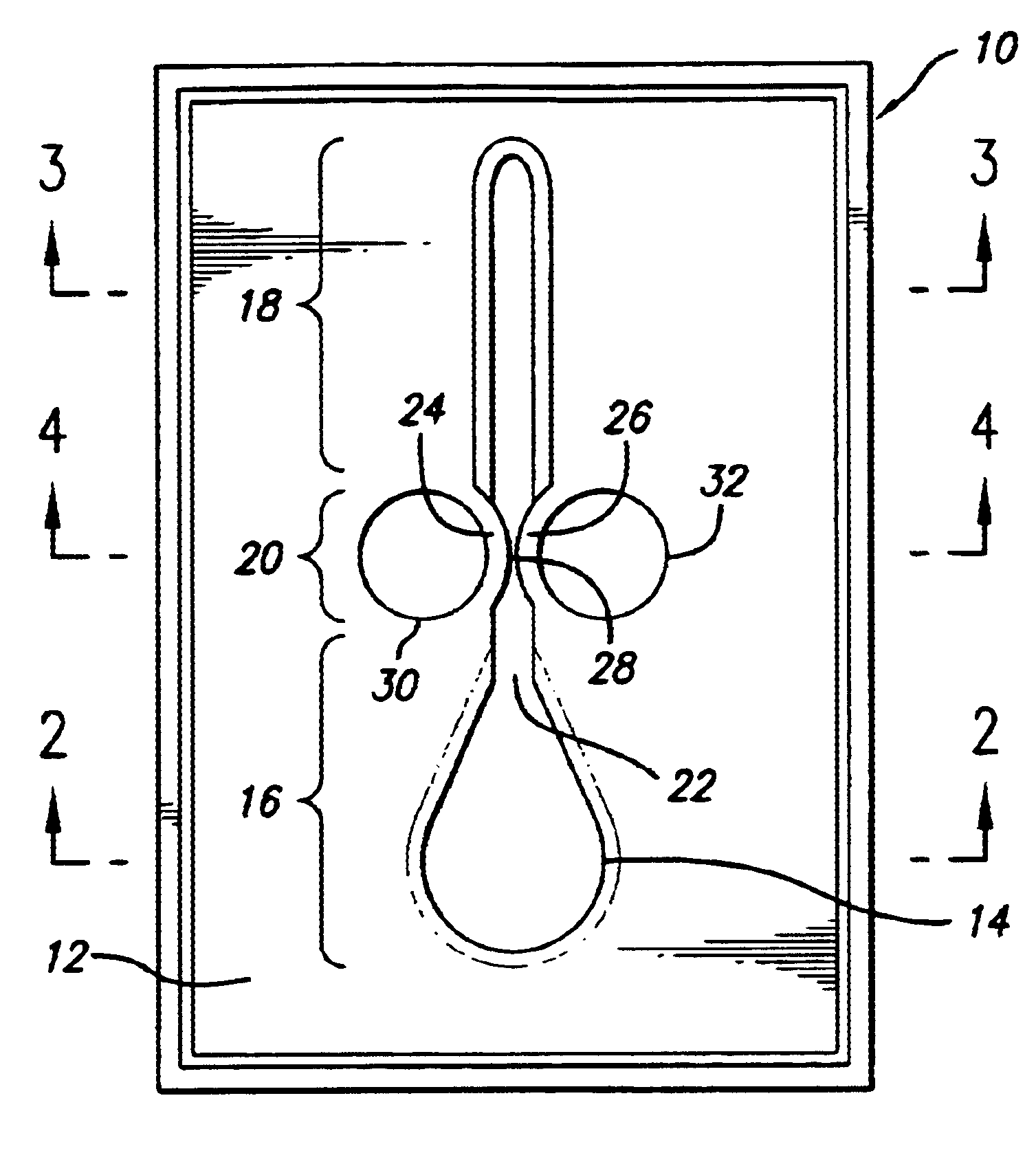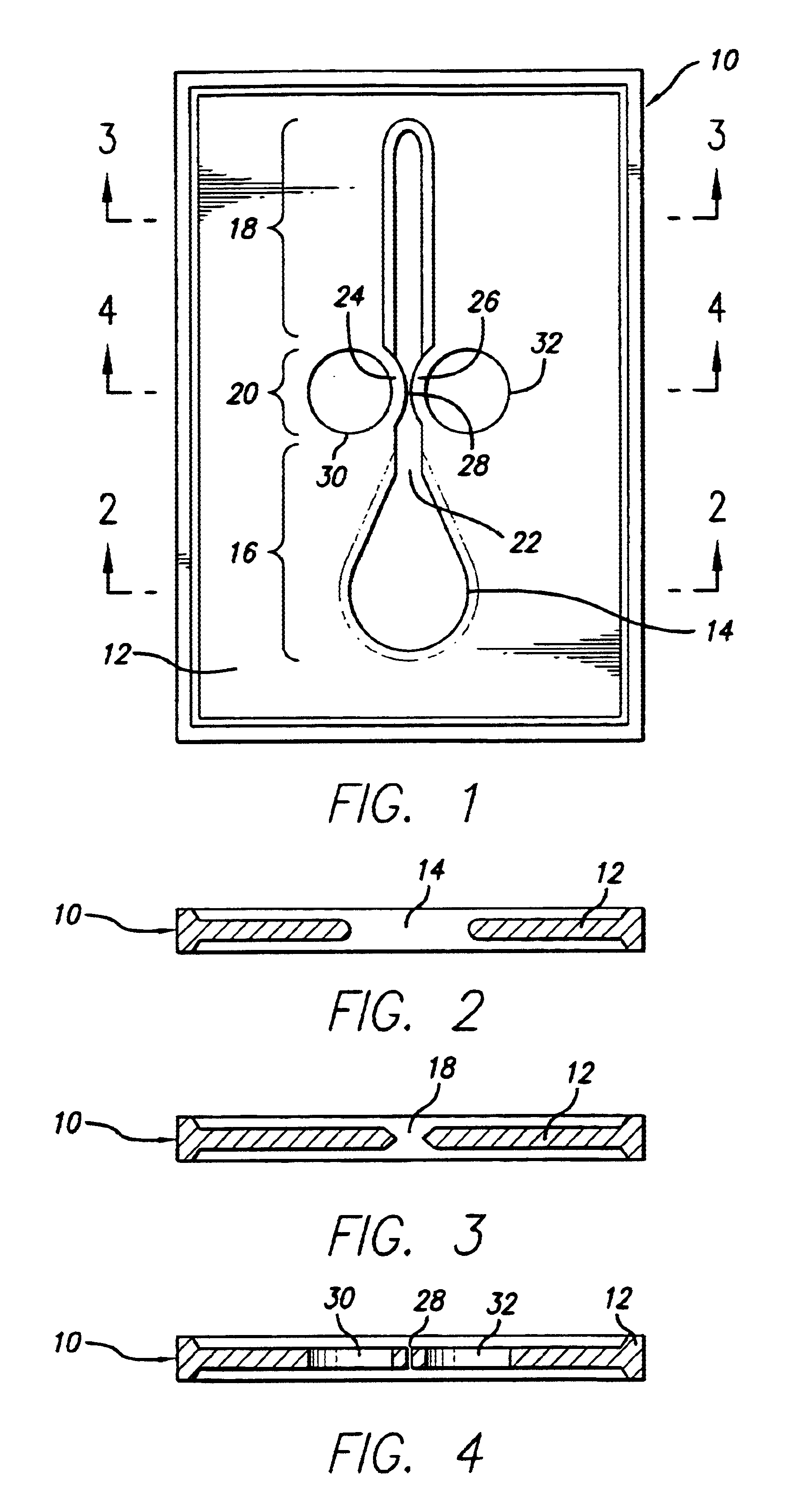Slide clamp
a clamp and slide technology, applied in the field of slides, can solve the problems of unsatisfactory situation, raise the possibility of condition known as a free flow hazard
- Summary
- Abstract
- Description
- Claims
- Application Information
AI Technical Summary
Benefits of technology
Problems solved by technology
Method used
Image
Examples
Embodiment Construction
Referring now to the drawings in more detail in which like numerals used across several views indicate like or corresponding elements, there is shown in FIG. 1 a slide clamp 10 for controlling the flow of medical fluid through an intravenous (I.V.) tube (not shown) located through the clamp. The clamp includes a plate 12 that forms the body of the slide clamp and a slot 14 formed in the plate. The slot includes a flow section 16, shown in cross-sectional detail in FIG. 2, and an occlusion section 18, shown in cross-sectional detail in FIG. 3. The slot further encompasses a pinch zone 20 located between the flow section and the occlusion section for resisting the accidental dislodgement of the I.V. tube from the occlusion section to help prevent hazards associated with free flow, as discuss above.
The pinch zone 20 appears as a necked down area and provides a slot length of reduced width in comparison to the occlusion section 18 and thus functions as a stop that resists movement of a ...
PUM
 Login to View More
Login to View More Abstract
Description
Claims
Application Information
 Login to View More
Login to View More - R&D
- Intellectual Property
- Life Sciences
- Materials
- Tech Scout
- Unparalleled Data Quality
- Higher Quality Content
- 60% Fewer Hallucinations
Browse by: Latest US Patents, China's latest patents, Technical Efficacy Thesaurus, Application Domain, Technology Topic, Popular Technical Reports.
© 2025 PatSnap. All rights reserved.Legal|Privacy policy|Modern Slavery Act Transparency Statement|Sitemap|About US| Contact US: help@patsnap.com



